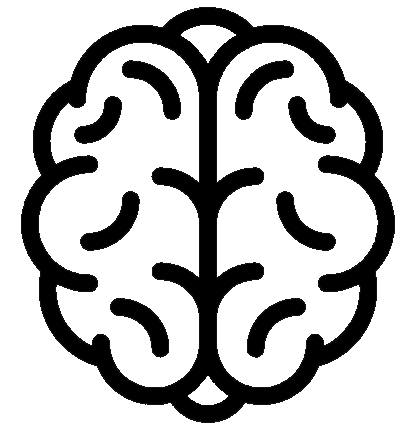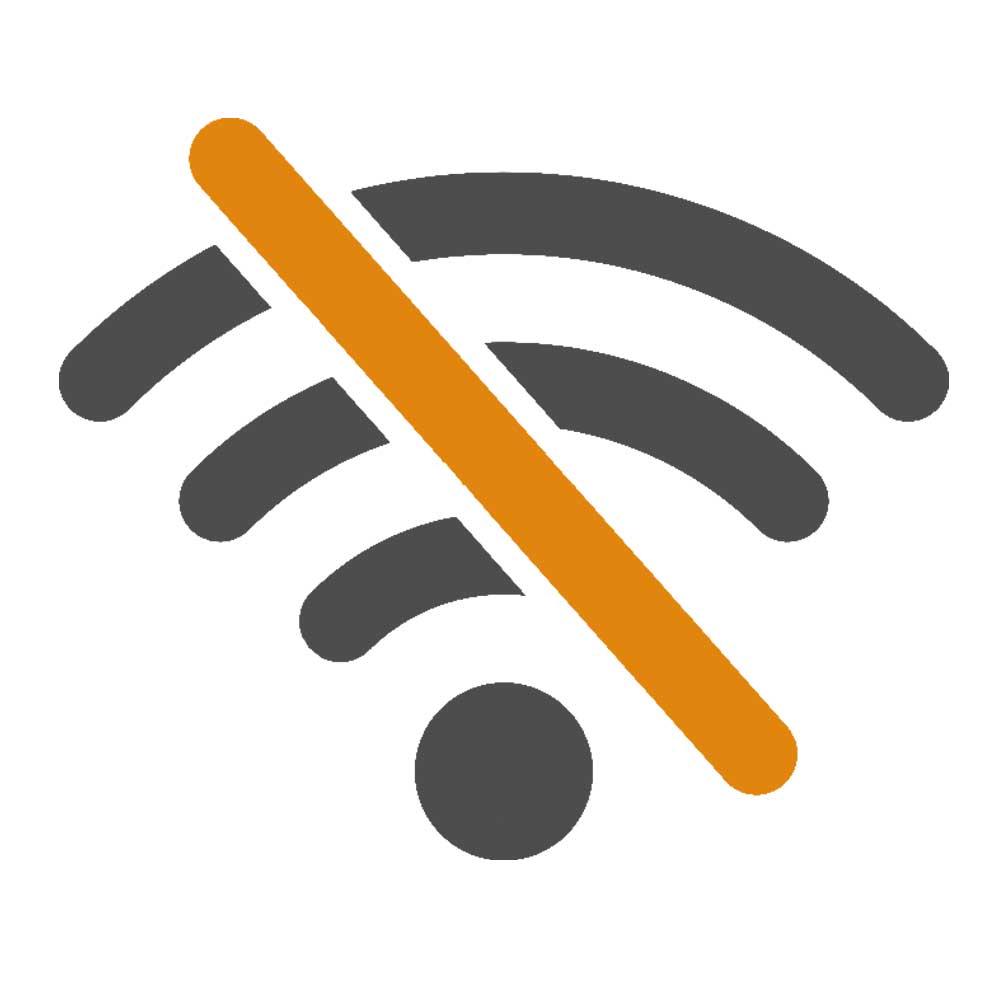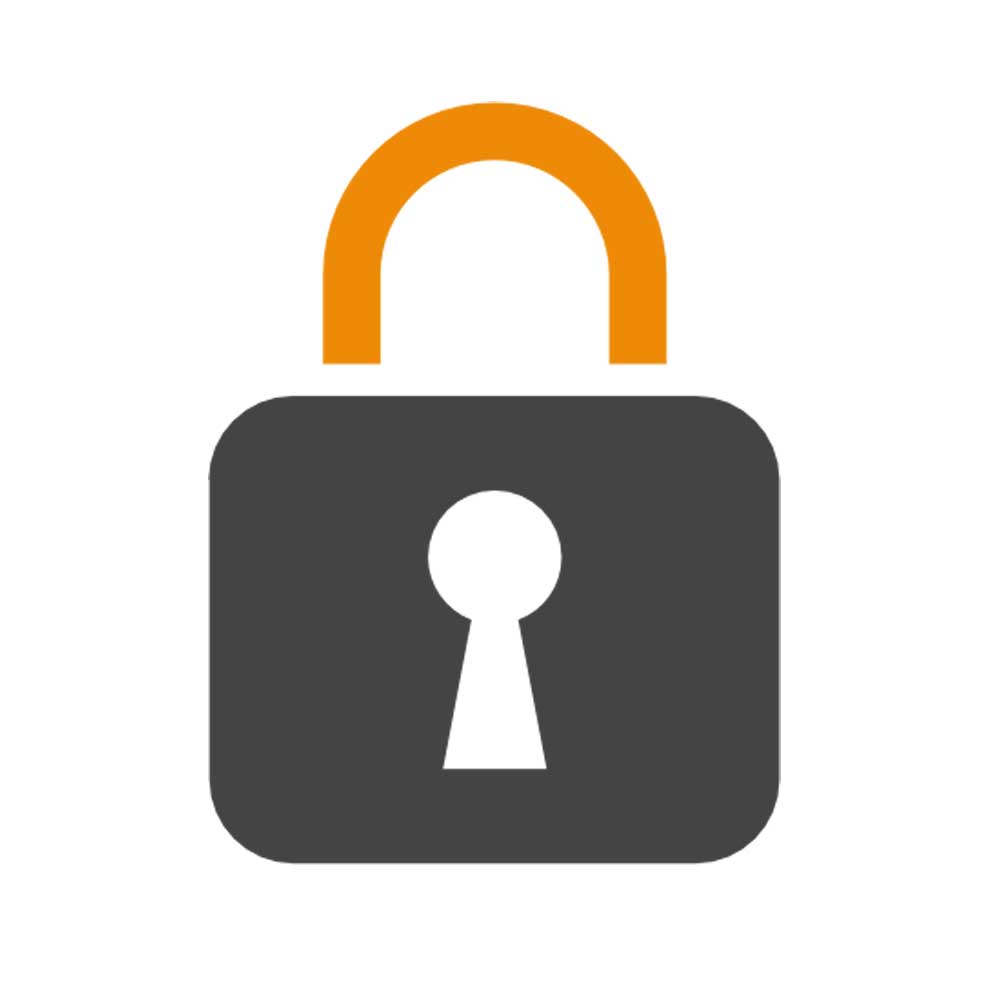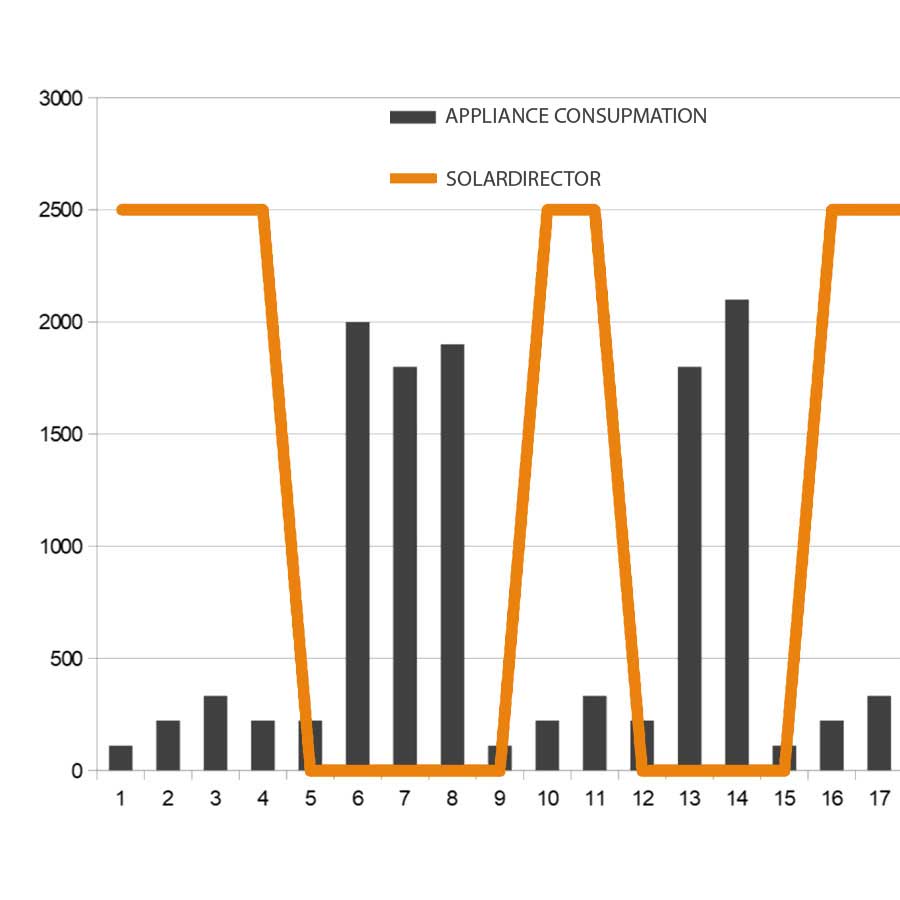Maximize self-consumption of your photovoltaic panels
SolarDirector is the only retrofit system for an advanced optimization of the surplus of photovoltaic production, which features sophisticated power-management logic to get the most of the energy produced by your system. A wireless communication network between the devices in your home allows the automatic activation of appliances and electrical loads based on the sum of their consumption, a hierarchy of priorities, and a reaction to the change in consumption of the whole house. All without any daily intervention on your part, except in the initial configuration and strategy setup phase.
Full Automatic
No need to work from your smartphone. SolarDirector takes care of turning the various utilities on and off, minute after minute, day after day.
Full Retrofit
There is no need to knock down walls or modify the existing electrical system, thanks to the wireless network and remote control simulation.
Full Verticalized
Specifically designed to solve the most common issues in optimizing the self-consumption of photovoltaic systems for residential use.
Low Cost
It uses commercially available hardware components, on top of which the SolarDirector firmware is loaded.
Squeeze until the last drop of energy
The online monitoring app allows you to find the strategy best suited to your needs in the initial stages for exploiting the energy surplus. Avoid wasting your energy by putting it online at ridiculously low prices!
ESP8266 Mesh Network
The offline mesh network between the nodes allows you to transfer messages in a chain up to 3 round trips, allowing you to reach even areas of the house that are underground or not covered by the Wi-Fi signal.
SolarDirector modules
SolarDirector
has several modules:
 Measurement Central
Measurement Central: Photovoltaic production, consumption, energy flows in the storage system
 Smart Switches
Smart Switches: Automatic switching on/off of the load via relay
 Infrared Remote Controllers
Infrared Remote Controllers: Automatic on/off of the load via IR
Smart switch
Smart sockets allow you to automatically turn on or turn off loads that are connected to the socket. Dehumidifiers with mechanical activation, air purifiers, heaters, lighting systems, fans, and any other user that can function by closing or interrupting the primary power supply circuit (by unplugging or plugging in, basically...). SolarDirector smart sockets are based on standard commercial products, but the default firmware is replaced with software optimized for specific application logics. Attention: the features of the original product are not available in SolarDirector devices.
Smart Infrared Trasmitter
Smart IR transmitters simulate the behavior of a remote control, and allow you to automatically turn on or off devices and appliances for which IR communication coding has been implemented. SolarDirector smart transmitters are optionally available with an embedded thermometer and a buzzer for overcurrent allert.
Air Conditioner / Heat Pump Coding:
-Daikin
-Samsung
-Mitsubishi
-LG
-Panasonic
-Hitachi
-Haier
-Fujitsu
-Airwell
-Whirlpool
-Trotec
-Sanyo
-Sharp
-Toshiba
-others... (verification needed)
Apps: Local Access Point + Web Portal
Browser based applications: local + remote
Once the WiFi access credentials for Internet communication have been set locally in the central unit, it will be possible to configure and monitor SolarDirector from its web portal. While ensuring a better user experience in always-online mode, once the consumption strategies have been correctly configured from the web portal, it will be possible for SolarDirector to continue to operate completely offline. The SolarDirector software also manages the variations in self-consumption strategy for the different seasons:
- summer (e.g. cooling, underground dehumidifiers, etc.)
- winter (e.g. heat pumps, forced air circulation, air purifiers, etc.)
- mid-season (e.g. dehumidifiers, air purifiers, etc.)
Why SolarDirector is different?
There are many other software for managing home automation and smart devices, but SolarDirectorolar is the only one that:

Works Offline
SolarDirector devices continues to work perfectly even without an internet connection. The primary logic is written in the internal software of the devices, which act and communicate with each other, without the need to talk to outside sources. SolarDirector apps and web portals are useful for initial configuration and monitoring, but are not essential for daily operation. Many Smart Devices instead rely on external services and apps, managed by companies that could decide to modify, suspend or insert unpleasant advertising in their software, without your control. These software are the only ones capable of managing the automation of scenarios, and the devices must always be connected.

It doesn't waste your time
There are no annoying software updates, once you learn and configure it it will stay that way forever, without forcing you to understand every time what doesn't work anymore after an automatic update. The initial software written in the devices already includes a standard management of security and privacy.

No stress for your household appliances
The consumption prediction of autonomous household appliances (washing machine, dishwasher, etc.) allows SolarDirector to operate in a “slow” way, every 10 minutes, avoiding continuous “plugging and unplugging” of connected household appliances (air conditioners, dehumidifiers, fans, etc.). The scenarios of other systems, to avoid exceeding the maximum threshold of the supplier for a few seconds (3.3 KW on 3KW contracts), must be configured in such a way as to perform the checks very closely, as it may happen in extreme situations in which the ON/OFF values sent to the users vary continuously, reducing the life of the controlled unit. SolarDirector, on the other hand, remembering the graph of previous consumption, makes the choices a few minutes in advance, to avoid an overload influenced by the household appliances it manages from occurring during the future time slot.

You don't have to be a scientist
SolarDirector natively manages a sequence of 10 appliances to be turned on/off without requiring the user to perform sophisticated chain programming (we have already done this). The scenarios of other systems, however, are to be configured by the user, with programming formulas (IF, THEN, ELSE), both when turning on and when turning off. It's not that simple, and it's not guaranteed to work...
Meteo Forecast Integration
Solar radiation forecasts influence system choices
During the early hours of the morning, if the system is connected online, the server communicates to the local control panel the forecasts on the quality of solar radiation in the chosen location. If variable weather is forecast (or the function is deactivated), priority is given to charging the storage system and only subsequently, in case of excess, to the connected devices. If, however, a totally sunny day is forecast, the devices are activated at the same time as the charging phase, increasing the operating hours, reducing overheating of the storage, and extending its life.
Prevents detach of the energy meter due to power limit exeeding
Have you ever been left in the dark and had to go out in the cold or in the rain to reactivate the meter because you turned on 2 appliances at the same time? The load manager integrated in SolarDirector allows you to drastically reduce these inconveniences, driving the coil of an NC contactor (contactor) of the brand of your system to be added to the electrical panel, which automatically disconnects the secondary line in the event of consumption exceeding those provided by your electricity supply contract, and automatically reactivates it after 20 seconds.
This action is useful because:
-anticipates and prevents mechanical disconnection of the main meter;
- notify the user that a correction on consumption is necessary;
-reactivates automatically the disconnected line after a few seconds, without having to leave home.
Compared to traditional load managers from other manufacturers, the SolarDirector system is able to "add" the power available from the grid with the instantaneous power of your photovoltaic system, causing the secondary line to be disconnected only if the withdrawal from the grid (and not the total consumption) exceeds the set limits.